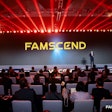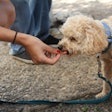The US petfood industry is one of the few parts of the US food industry undergoing sustained growth. The US petfood, supplies and services market was valued at US$38.4 billion in 2006 and has experienced 12% inflation-adjusted growth between 1998 and 2003. Growth continues, with a 3.4% inflation-adjusted increase in sales mainly attributed to sales growth from pet owners' increasing demand for premium products.
The key market drivers continue to be humanization of pets and the impact it has on consumer lifestyles. According to one survey, 83% of pet owners call themselves "mommy" or "daddy," and 59% celebrate their pet's birthday (Mintel). Now we see this attitude has strengthened, at least in terms of money spent on food with quality ingredients, healthy snacks, services and health care.
With rampant discounting and shrinking margins, there is also an increased focus on health and quality. Pet product marketers are charting new courses of growth via premium and natural products, including organic and eco-friendly items, which are at the center of the new product explosion. As a result, manufacturers have been able to compete more on the quality, taste and function of food, rather than putting primary emphasis on a low price.
The Goodlife Recipe
A case in point is Mars PetCare US, which has launched a high-end petfood brand called the Goodlife Recipe. Marketing for the brand plays up its premium ingredients and mainstream price.
On the brand's website (www.goodliferecipe.com), you'll see this paragraph: "At the Goodlife Recipe Pet Care Co., a division of Mars Inc., we choose to get more out of life. A life filled with everything we love balanced with everything we need. To us, that's what a good life is all about. And we don't just want it for ourselves, we want it for our cats and dogs, too."
The humanization of pets is nothing new, and the relationship continues to evolve as pets further prove their importance in our lives. A recent survey conducted for the Goodlife Recipe brand shows celebrating life with pets is increasingly based on a more shared relationship because people are finding pets offer real life benefits above and beyond affection and companionship.
"The Goodlife Recipe food," reads the promotional material, "was developed to offer pets a variety of foods, snacks and treats that achieve the perfect balance of taste and nutritional value, without compromising on either." Its tag line is, "inspired by cat- and dog-loving people like you."
"We developed the Goodlife Recipe products to ensure the food we give our pets provides more than just the basics for good health and taste. Our philosophy involves a balanced approach and focuses on adding enjoyment to their lives. The Goodlife Recipe is all about feeding pets nutritional, great-tasting foods that embody the love we feel for them," says Fiona Tomlin, the Goodlife Recipe brand vice president.
The cat litter market
Some months ago, I received a product from one of our readers called Pet Proof. This product claims to remove stains and eliminate unwanted pet odors from "you know what." I found the product to be amazing and it prompted me to talk a bit about the cat litter segment in my column this month.
Trends in this segment seem to mirror those we're seeing in the petfood market. In 2002, the size of the cat litter market was in the range of US$1.2 billion to US$1.5 billion and the overall growth rate of the category was 2-3% per year. This market is segmented into three groups: clay, clumping clay and alternative (litters that are not made from clay or minerals).
The clay segment accounts for about one-third of sales, the clumping clay segment about 60% of sales, and so that leaves 7-10% for the alternative segment. However, this segment is the fastest growing segment at 6% annually. Although the market for cat litter seems to be maturing, the trend toward premium products and other factors will contribute to modest sales growth for years to come. In 2005, cat litter sales at the retail level were up by 3.2% to US$1.22 billion.
This modest growth trend will continue, as more pet owners become concerned about the global environment. New product introductions that tap into environmentally aware consumers and new information about the health risks of both traditional clay-based litters and newer silicone-based litters are combining to drive consumer interest in alternative (and more expensive) litter products.
The popularity of private label litters, which are undergoing a transformation along with the rest of the pet products segment, is another emerging trend seen in this segment. Private label cat litter is benefiting from its perceived value by consumers, as well as from the higher margins it offers to retailers. IRI reports that the average private label price per unit was US$2.67, versus the branded product average of US$4.22.
For the 52 weeks ending March 19, 2006, IRI reported that private label cat/dog litter and deodorant sales in food, drug and mass merchandisers (excluding Wal-Mart) was US$103.1 million, up 3.8% versus 2005. At Wal-Mart, private label petfoods/supplies is the third-largest private label sales category, with an estimated US$967 million in sales value.













